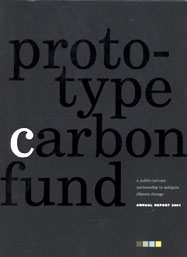by Tracey
(Madison)

Carbon Superfund
Global Warming Superfund – Whilst this not “news”, in a September In a 2007 report, the global investment bank Lehman Brothers called for a global warming superfund and strongly implied that nations should pay into it on the basis of their historical emissions. Their proposition is this:
The United States, the European Union, Japan, and Russia are estimated to have accounted jointly for nearly 70% of the build-up of fossil-fuel carbon dioxide between 1850 and 2004. Developed countries are also, directly or indirectly, responsible for much of the destruction of the world’s carbon sinks, most notably its forests. By contrast, India and China are estimated as having contributed less than 10% of the total!
Developing countries are already making the point that the social cost of carbon and therefore the total abatement cost is as high as it is because of past emissions. Hence, they argue, the developed countries should be paying for the amount by which the social cost of carbon is higher than it would have been but for their actions. Those nations responsible for the bulk of the release of CO2 into the atmosphere in the past could agree to pay for these responsibilities by paying into a global warming superfund. That fund could in turn be used to reduce the amount that would otherwise be paid by the emerging countries in respect of their future emissions or, of course, to pay for example for research and development, or adaptation (Llewellyn and Chaix, 2007).
On a more systematic front a Greenhouse Development Rights (GDRs) framework has been designed by a United States climate think tank called EcoEquity. This frameworks seeks to support an emergency climate stabilisation programme while, at the same time, preserving the right of all people to reach a dignified level of sustainable human development free of the privations of poverty. The framework quantifies national responsibility and capacity, with the goal of providing a coherent, principle based way to think about national obligations to pay for both mitigation and adaptation. Its authors put a persuasive case that:
an emergency climate program is needed, that such a program is only possible if the international climate policy impasse is broken, and that this impasse arises from the inherent but surmountable conflict between the climate crisis and the development crisis. It argues that the best way to break this impasse is, perhaps counter-intuitively, by expanding the climate protection agenda to include the protection of developmental equity. To that end, the Greenhouse Development Rights framework is designed to hold global warming below 2ºC while, with equal deliberateness, safeguarding the right of all people everywhere to reach a dignified level of sustainable human development. This standard of living, which we might say is that of a global middle class, is higher than the global poverty line, but lower than the northern middle-class standard. To be explicit, we see this right to development, and the corresponding right to be exempt from global climate obligations, as belonging to poor people, not poor countries. And, indeed, the GDRs framework proceeds transparently from this premise, first defining an emergency stabilization pathway, then quantifying national responsibility and capacity to act, and finally calculating national obligations to pay the costs of both an emergency mitigation program and strenuous adaptation efforts. Moreover, it does this for all countries, and in a manner that takes income disparities within nations into explicit account. By so doing, it seeks to secure for the world’s poor the environmental space and resources needed for low-carbon development. Given this goal, the GDRs framework inevitably allocates to the wealthy and high-emitting, in both the North and the South, the costs of the necessary mitigation and adaptation, and does so no matter how large (or small) these costs turn out to be. Such an approach may appear improbably ambitious, but nevertheless GDRs are being realist, albeit in a new way. Rather than treating short-term political constraints as immutable, we sought to construct a transparent framework capable of catalysing and then supporting an emergency climate program that could actually meet the long-term challenge before us†(Baer, Athanasiou and Kartha, 2007).
Under this framework, the GDR Responsibility and Capacity Index allocates Australia’s share of the total global cost of meeting the 2ºC cap at 1.7%, not an outrageous proposition. For the developed economies, the GDRs framework requires CO2 emissions to reach zero between 2020 and 2025. Unless there is large scale and drastic action we will be condemned to a catastrophic 3 degrees of warming.
